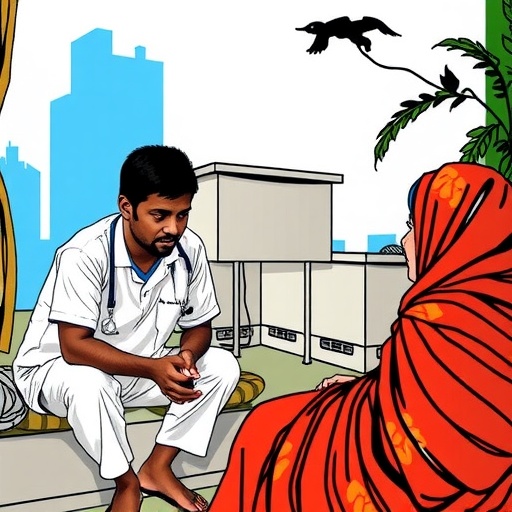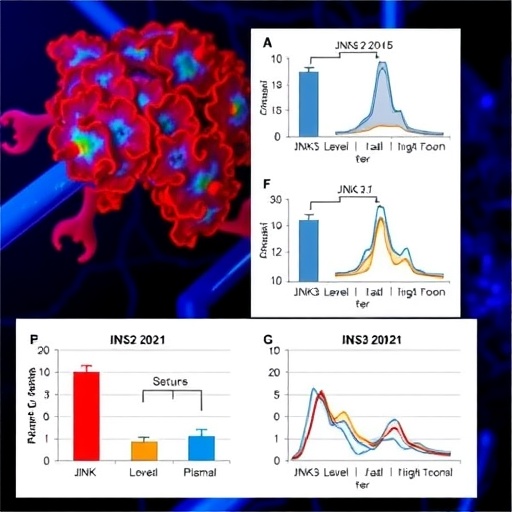In recent years, the rising prevalence of hypertension has drawn significant attention from researchers and policymakers alike. Hypertension, often referred to as high blood pressure, is not merely a health issue; it is a pressing global concern linked to various adverse health outcomes, including heart disease and stroke. A recent study conducted by Ishaq and Kakoly delves into a critical aspect of hypertension care: the socioeconomic inequalities that affect how individuals in Bangladesh access treatment. This research, published in BMC Health Services Research, sheds light on the disparities that exist within healthcare systems and how they impact populations differently based on their socioeconomic status.
At its core, the study seeks to understand how various factors contribute to the unequal utilization of hypertension care across different socioeconomic strata in Bangladesh. This examination is crucial not only for Bangladesh but for countries worldwide grappling with similar public health challenges. The findings underscore that socioeconomic status plays a vital role in determining an individual’s access to healthcare services, with implications that can exacerbate existing health disparities.
The methodology employed in the study is noteworthy. Utilizing a decomposition analysis, Ishaq and Kakoly evaluate individual and contextual factors that influence healthcare utilization. This analytical approach allows researchers to dissect the elements that significantly contribute to observed inequalities, thus providing a nuanced understanding of the intersection between social determinants of health and healthcare access. The decomposition model offers insights into how various economic and social variables correlate with the likelihood of receiving adequate hypertension care.
Bangladesh, like many low- and middle-income countries, faces a myriad of challenges in its healthcare system. The study highlights that a substantial portion of the population remains unaware of their hypertension status, leading to inadequate treatment. Furthermore, even among those who know their condition, many do not receive proper care due to financial barriers, lack of transportation, and limited access to healthcare facilities. By examining these barriers, the study emphasizes the need for targeted interventions that address both financial and logistical challenges.
One of the critical findings of the analysis is the stark contrast in treatment rates between different socioeconomic groups. Individuals from lower income brackets experience significant obstacles in accessing hypertension care compared to their wealthier counterparts. This disparity is alarming, given the high burden of hypertension in populations that are already vulnerable. The results raise essential questions about the effectiveness of current healthcare policies and whether they adequately cater to the needs of marginalized communities.
Moreover, the research draws attention to the role of education in hypertension care utilization. Those with higher educational attainment tend to seek care more frequently, suggesting that health literacy is a significant determinant in understanding and managing hypertension. The implications are vast: enhancing educational initiatives around hypertension could empower individuals to seek care proactively, thus improving overall health outcomes.
Cultural perceptions and societal attitudes also play a significant role in healthcare utilization. The study details how stigma surrounding chronic diseases like hypertension can hinder individuals from seeking help. This sociocultural dynamic often leads to a silent epidemic, where many sufferers remain untreated due to fear of social ostracism or misunderstanding of the disease. Therefore, addressing these cultural barriers is essential for improving access to hypertension care in Bangladesh and similar contexts.
In terms of public health initiatives, the research calls for an integrated approach that combines awareness campaigns with financial support for lower-income groups. Policymakers must prioritize creating a healthcare environment that is accessible and affordable for all, particularly for the underprivileged. This could include subsidies for hypertension medication and the establishment of community health programs aimed at educating individuals about the importance of regular check-ups and treatment adherence.
Furthermore, the research advocates for enhancing healthcare infrastructure in rural areas, where the majority of Bangladesh’s population resides. A significant barrier identified is the geographical distance from healthcare facilities, particularly for those living in remote regions. Improving transportation systems and establishing more localized care centers could play a pivotal role in mitigating the existing inequalities in healthcare access.
Additionally, the study discusses the importance of collaboration between various stakeholders, including government agencies, non-profits, and community leaders, to create a comprehensive strategy for addressing these inequalities. Collaborative efforts could foster innovative solutions that target root causes and provide sustainable results for hypertension treatment availability and education.
The findings also stress the need for more robust data collection on hypertension prevalence and care utilization across different demographics. Comprehensive data can inform future research and policy-making, enabling a better understanding of how socioeconomic factors influence health behavior and outcomes. With granular data, interventions can be more precisely tailored to meet the needs of specific populations.
Moreover, the research dovetails with global health priorities, emphasizing the need for sustainable development goals that target health inequality. As countries strive to meet these goals, the study serves as a critical reminder of the work that remains in ensuring that healthcare systems are equitable and inclusive.
In conclusion, the research conducted by Ishaq and Kakoly provides a vital perspective on the socioeconomic inequalities affecting hypertension care utilization in Bangladesh. Through its detailed analysis and strategic recommendations, the study calls for concerted efforts to address the multifaceted barriers faced by lower-income populations. By focusing on education, cultural perceptions, infrastructure, and collaborative strategies, there is potential for significant improvements in health outcomes for those affected by hypertension. This research not only adds to the growing body of literature on healthcare disparities but also serves as a catalyst for change in public health policy.
Moreover, the findings can resonate with global audiences, as the challenges of healthcare access transcend borders. Countries worldwide can glean insights from Bangladesh’s experience, reinforcing the universal message that health equity is essential for a thriving society.
Subject of Research: Socioeconomic inequalities in hypertension care utilization in Bangladesh.
Article Title: Decomposition of socioeconomic inequalities of hypertension care utilization: Bangladesh experience.
Article References:
Ishaq, F., Kakoly, I.J. Decomposition of socioeconomic inequalities of hypertension care utilization: Bangladesh experience.
BMC Health Serv Res 25, 1486 (2025). https://doi.org/10.1186/s12913-025-13235-1
Image Credits: AI Generated
DOI: https://doi.org/10.1186/s12913-025-13235-1
Keywords: Socioeconomic status, hypertension, healthcare inequality, Bangladesh, health literacy, public health policy.
Tags: access to healthcare services in Bangladeshaddressing health disparities in populationsdecomposition analysis in health researchhealth outcomes related to high blood pressurehealthcare utilization factorsheart disease and stroke preventionhypertension care in Bangladeshimpact of socioeconomic status on healthinequalities in hypertension treatmentpolicy implications for hypertension carepublic health challenges in developing countriessocioeconomic disparities in healthcare access





